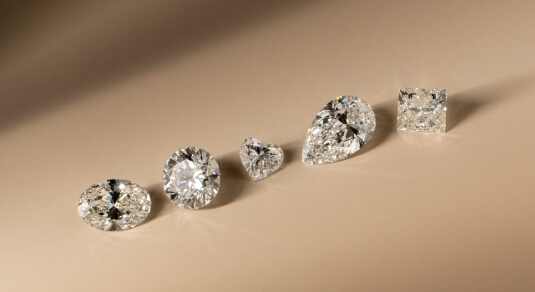Lab-grown diamonds are transforming the world of fine jewelry, offering an ethical, sustainable, and often more affordable alternative to mined diamonds. But when shopping for a lab-created diamond, the same set of standards applies as with natural stones—the 4Cs: Cut, Color, Clarity, and Carat Weight. These criteria, originally established by the Gemological Institute of America (GIA), remain the gold standard in evaluating diamond quality.
Let’s dive into each of the 4Cs lab diamonds and how they apply to lab-grown diamonds.
1. Cut: The Sparkle Factor
The cut of a diamond doesn’t refer to its shape (like round or oval) but rather how well it has been faceted to reflect light. A well-cut diamond will shine brilliantly because its angles and proportions are optimized for light performance.
For lab-grown diamonds, the cut is just as critical. Since they’re grown in controlled environments, many lab diamonds are precision-cut, meaning you can often find stones with excellent or ideal cut grades more easily than among mined diamonds.
Pro tip: Prioritize cut quality over other Cs if sparkle is your top priority.
2. Color: The Whiteness Scale
Diamond color is graded on a scale from D (colorless) to Z (light yellow or brown). Colorless diamonds are rarer—and more expensive—but many lab-grown diamonds fall into the near-colorless range (G-J), which still appear white to the untrained eye.
Lab diamonds often have a slight yellow, blue, or gray tint due to the trace elements used in the growing process. However, advanced technology means many lab diamonds still achieve top color grades.
Did you know? Blue-ish hues can sometimes appear in CVD (chemical vapor deposition) diamonds, whereas HPHT (high pressure high temperature) diamonds may lean warmer.
3. Clarity: Fewer Flaws
Clarity refers to the presence of internal (inclusions) or surface (blemishes) imperfections. Like mined diamonds, lab diamonds are graded from Flawless (F) to Included (I).
One advantage of lab-grown diamonds is that their formation is highly controlled, which often results in fewer inclusions. Most lab diamonds fall in the VS1 to SI1 range—virtually eye-clean and perfect for most buyers.
Tip: Unless you’re buying a diamond over 2 carats or under magnification, lab grown diamonds, clarity differences may not be noticeable to the naked eye.
4. Carat Weight: Size Without the Sticker Shock
Carat measures a diamond’s weight, not its size, but they’re closely linked. One of the biggest advantages of lab-grown diamonds is that you can get a larger stone for the same price as a smaller mined diamond of equivalent quality.
This affordability allows buyers to opt for higher carat weights without sacrificing quality or breaking the bank.
Example: A 2-carat lab diamond might cost the same—or less—than a 1-carat mined diamond with similar specs.
Final Thoughts: Choosing the Right Balance
When shopping for a lab-grown diamond, it’s all about finding the right balance of the 4Cs based on your preferences and budget. Whether you want the perfect sparkle, a larger size, or a balance of all qualities, lab diamonds offer exceptional value and beauty.
And the best part? You get all the brilliance of a traditional diamond—without the ethical or environmental concerns.




